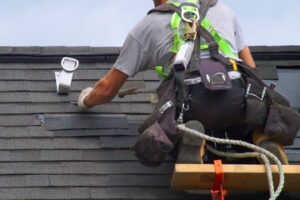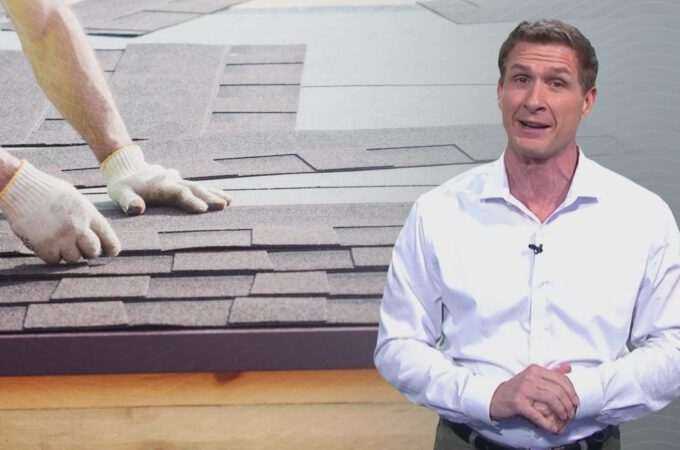Preventative Roof Maintenance
Performing preventative maintenance will keep your roof in good condition and allow for the detection of small problems that are easily repaired before they become large, costly leaks. A maintenance checklist tailored to the specific needs of each roof should be created and regularly updated.
Inspect the flashing, especially at openings for chimneys, skylights, wall penetrations, and equipment curbs. This is where most roof leaks originate.
Your roof’s flashing helps prevent leaks by creating a waterproof barrier between the interior of your home and the elements. However, water can seep into your house if it becomes loose or deteriorates. This is why it’s important to inspect the flashing regularly. During the inspection, you’ll want to look for any gaps or cracks in the flashing. You’ll also want to ensure the caulking around the flashing is tight. If it’s loose, scrape it off and apply a new bead of caulk to fill any gaps or cracks.
During the inspection, you should also look at any large accessories on your roof, such as chimneys and vent pipes. Chimneys should be swept clean to remove the soot-like substance known as creosote, which can lead to a chimney fire and water leaks if left unchecked. Vents should be checked for leaking and rust. Any skylights should be inspected to ensure that they’re in good shape, including their frames and the putty that seals them. You’ll also want to make sure that the rain gutters are clear of debris and are in good working condition.
If your roof is built with a metal roof, you’ll want to check the flashing around the chimney and vents for any rust or corrosion. You’ll also want to look at the flashing around any skylights, and check the condition of the mortar that holds them in place.
Another thing that you should be looking for when checking the flashing is any wrinkling. If you notice any diagonal wrinkles in the flashing, this is a sign that the flashing isn’t properly secured and may soon start to deteriorate.
If you find that your roof flashing is in poor condition, it’s best to call a professional. However, if you’re willing to take a little time to learn about roof maintenance and how to spot problems with the flashing, you can easily make a few simple repairs on your own. By doing so, you’ll help to extend the life of your roof and protect your home from water damage.
Trim Tree Branches
Trees are beautiful additions to any yard and provide shade from the sun. They also help to create a sense of privacy and beauty. However, homeowners should be vigilant about trimming the trees surrounding their home and especially if they have large branches that hang over the roof. If left unattended, these tree limbs can damage the roof and cause significant structural problems for the home.
When a tree limb blows off during a storm, it can scrape along the roof and gouge holes in the shingles. This can be expensive and damaging to the roof. To prevent this from happening, trim the limbs to at least six feet away from the roof. You can do this yourself if you are comfortable using a ladder, or hire a professional arborist to do the job. However, it is important to keep in mind that the arborist should be able to tell whether a tree is unhealthy or not before cutting.
It is also important to note that a fallen tree branch can damage other parts of the house and possibly even cause a fire. It is important to call your insurance company as soon as possible, if the damage is extensive, to see what they recommend doing. The insurance agent will likely want pictures of the damage and the roof before they begin any repairs.
A tree limb can do more than just damage your roof, it can also harm the landscaping around your home. You should always check the surrounding trees to make sure they are not in danger of falling during a storm. Some areas have laws limiting how close to your home you can trim or remove a tree.
If you are comfortable climbing a ladder to do the work yourself, you should always cut the branches with a sharp tool to avoid making a mistake that could lead to the branch falling. A good rule of thumb is to saw the branch just outside the branch collar (the slight swelling, often wrinkled, area where a thicker branch meets the trunk). Cutting too close to the trunk can cause the branch to split during a storm, causing damage to the roof and potentially the entire tree.
Clean the Roof Surface
As fall approaches, it’s time to inspect your roof surface. This is an important part of your home’s first line of defense against the elements and preventative maintenance will help you avoid costly repairs in the future.
Keeping your roof clean is a great way to extend the life of your shingles and help you spot any problems before they worsen. A good rule of thumb is to do a visual inspection of the entire roof every other year. This will ensure that there are no missing shingles, loose shingle tabs or cracked caulk around chimneys, vents and other roof penetrations. These are areas that can allow moisture into the wood which will accelerate deterioration and cause leaks.
It’s also a good idea to regularly remove debris that accumulates on the roof including dead leaves, branches, and other organic material. This will also help to ensure that water drains away from the roof surface properly.
If you’re going to be cleaning the roof yourself, it’s always a good idea to have an extension ladder nearby and wear safety equipment like goggles and gloves. It’s also a good idea to make sure that someone knows where you are when you’re on the roof so they can call for emergency help if necessary.
The cleaning process should include a thorough scrubbing of the entire surface of the roof. You should also check the area around drains, scuppers and gutters to see if there’s any blockage. This can be caused by a build-up of debris, or the use of de-icing salts which can cause damage to metal drain lines and roof membranes.
A cleaning solution should be used that is non-toxic to shingles. Mild laundry detergents, car washing soap and cold or hot commercial/industrial detergents are acceptable. Never use high pressure washers on a roof, as the force of the sprayer could dislodge or damage shingles.
If you see any moss or algae growth, it’s a good idea to use a sprayer attached to a hose to apply a mixture of equal parts chlorine bleach and water to the roof surface. This will kill the moss and algae growth and keep it from returning.
Check the Edge Metal
The edges of the roof are important places that may be susceptible to leaks. These areas are the places where the metal roof meets the wall of a building, the top edge of a parapet, and the trim at the bottom of a hip or ridge. These areas must be flashed properly to keep water out of the building. Many times this requires the use of caulking, butyl tape or other sealants to ensure the integrity of the flashing. These locations should be inspected during maintenance visits and during any significant storm events.
Leaks may occur at these locations due to a variety of reasons. For example, the fasteners that hold the metal roof in place could fail because of corrosion or the wrong size fastener was used. Or the seam, or side rib where two panels meet, could be damaged by improper installation and allow water to enter the structure.
These problems are easily corrected by a maintenance technician with proper training. Most roof manufacturers have a detailed maintenance program that includes scheduled inspections and timely repairs. These programs are also critical for maintaining compliance with manufacture’s roof warranties.
Another common reason for leaks at the edges of a roof is poor workmanship during the initial construction or repair. The details around the penetrations, termination details, and the transitions should be carefully inspected during maintenance visits. This is where the experience of the metal roofing professional will come in handy.
A good practice is to inspect these detail areas with a small flashlight and to be on a stable ladder. It’s important to tie off the ladder to prevent it from falling during the inspection. If it is too windy to do a visual inspection from the ground, then a pair of binoculars can be helpful.

